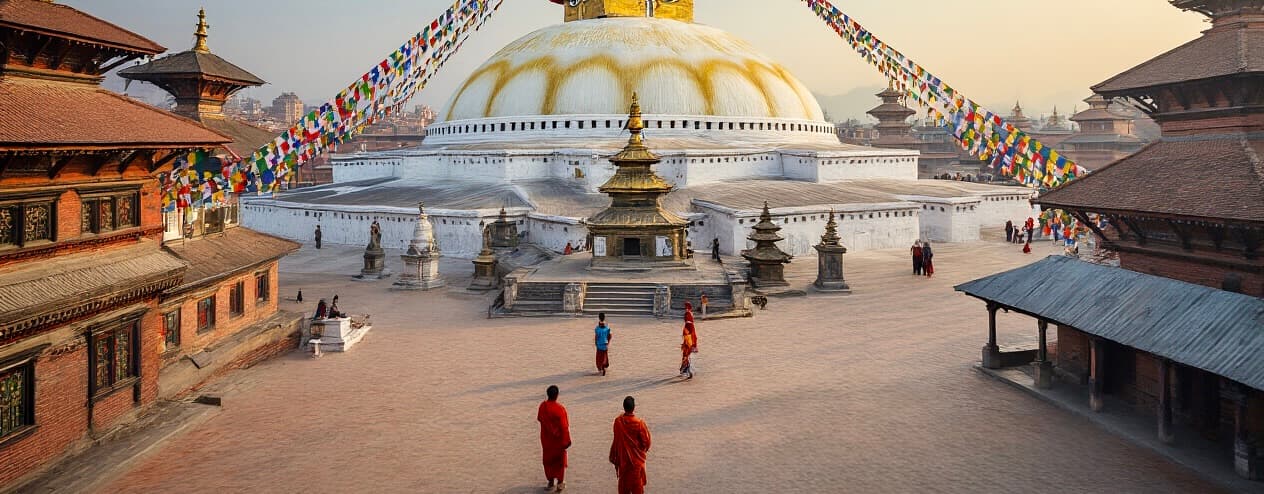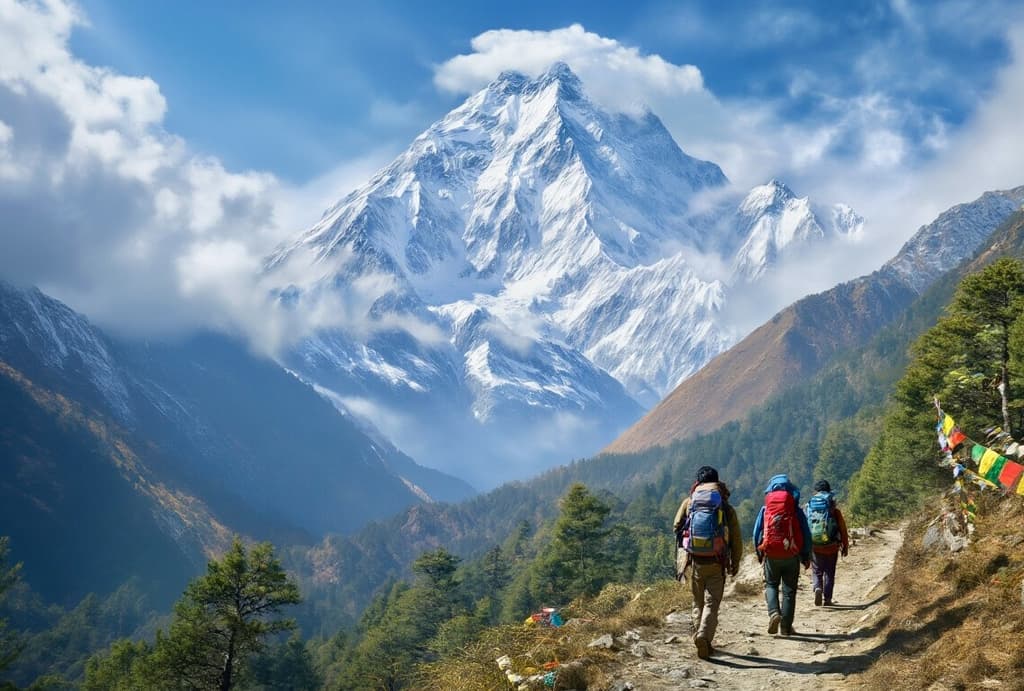Ever wondered why Kathmandu's ancient sites leave even seasoned travelers speechless? It's not just their age – it's the living, breathing culture that still pulses through stone carvings older than most countries.
A private tour of Kathmandu's UNESCO World Heritage sites isn't just another checkbox on your Nepal itinerary. It's your backstage pass to centuries of spiritual wisdom, architectural genius, and stories that textbooks missed.
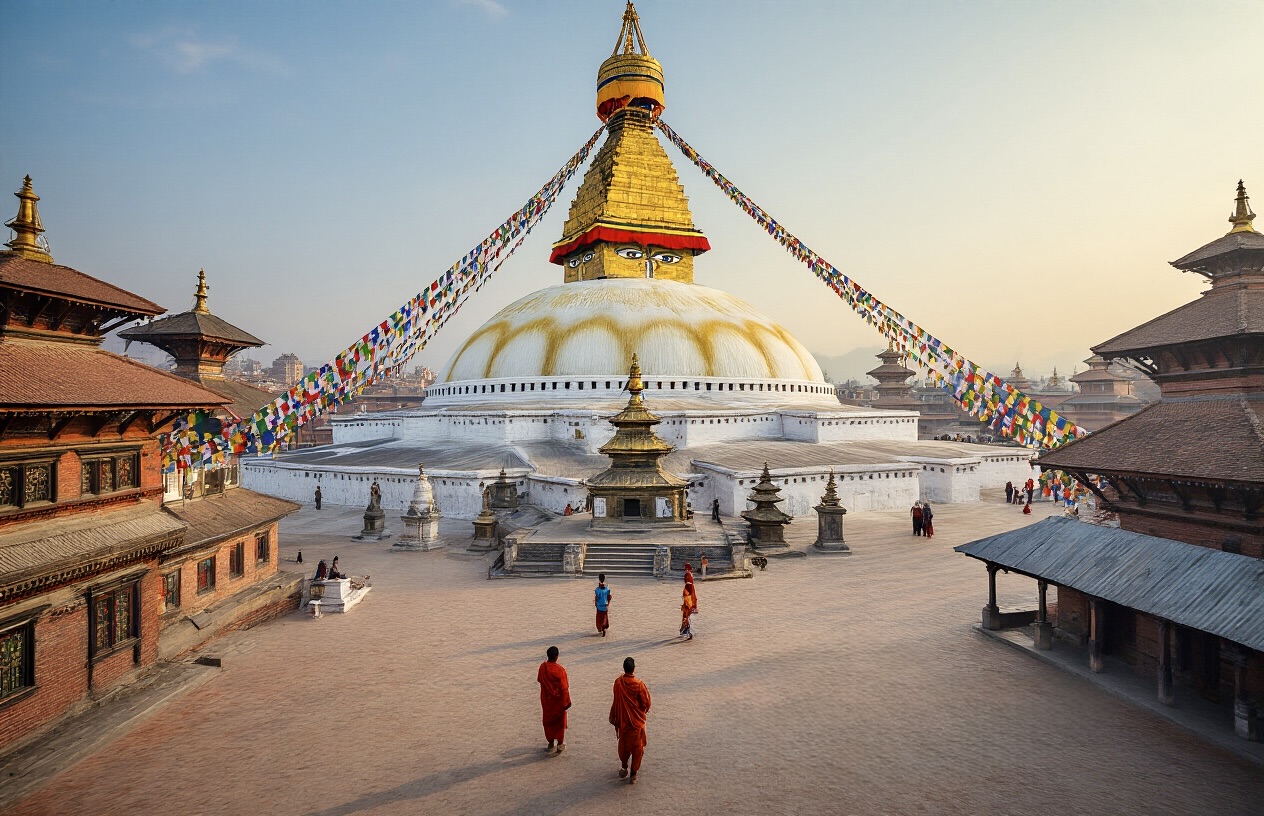
From the golden spires of Swayambhunath to the intricate woodwork of Patan Durbar Square, these sacred spaces reveal Nepal's soul in ways group tours simply can't match. Your personal guide decodes symbolism and shares local insights that transform beautiful buildings into meaningful experiences.
But here's what most visitors never discover about these ancient marvels...
Exploring UNESCO Heritage Sites in Kathmandu Valley
The Significance of UNESCO World Heritage Sites
The magic of Kathmandu Valley lies in its incredible concentration of UNESCO World Heritage Sites. These aren't just old buildings or monuments—they're living testaments to Nepal's rich cultural tapestry. When we visit these sites with our guests, we're not simply showing them pretty architecture; we're revealing centuries of artistic mastery, spiritual devotion, and historical significance.
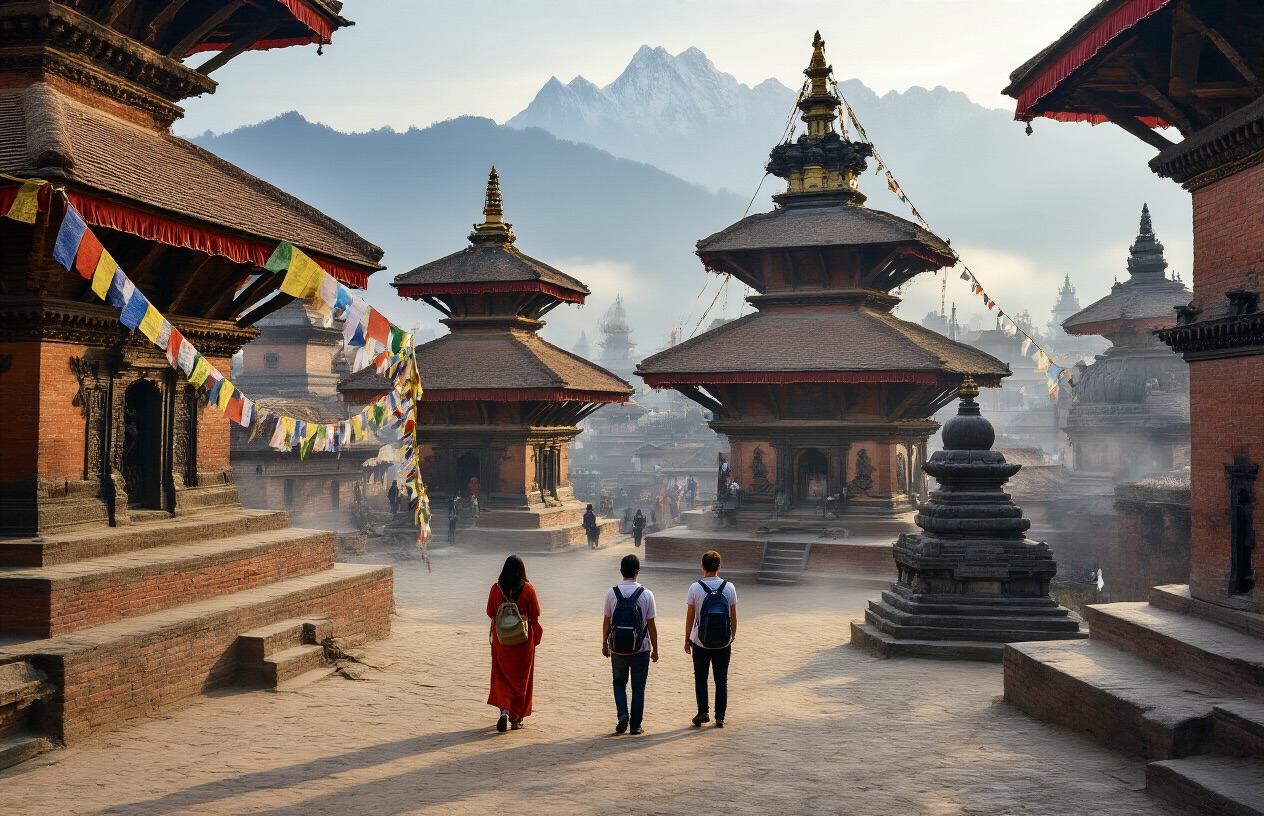
UNESCO designation means these places belong not just to Nepal, but to all humanity. They represent outstanding universal value that transcends borders. In the Kathmandu Valley, these sites have survived earthquakes, political changes, and modernization while maintaining their cultural authenticity.
Why Private Tours Offer the Best Experience
Ever tried understanding the intricate details of a temple while competing with 40 other tourists? Not fun. That's why we've built our private tours to give you breathing room and personalized attention.
With a private guide, you can:
- Ask all your burning questions without feeling rushed
- Spend extra time at sites that captivate you most
- Avoid the tourist crowds with strategic timing
- Capture perfect photos without strangers in every shot
- Get insider knowledge that group tours simply can't provide
Understanding Nepal's Cultural Legacy
Nepal's cultural identity runs deeper than most visitors initially realize. The heritage sites of Kathmandu Valley showcase a remarkable religious harmony, where Hindu and Buddhist influences have coexisted and blended for centuries.
We see this harmony in action at places like Swayambhunath, where Hindu and Buddhist worshippers pray side by side. The wood carvings, metal work, and stone sculptures you'll encounter aren't just decorative—they tell stories of gods, demons, historical events, and everyday life from centuries past.
How Luxury Holidays Nepal Enhances Your Heritage Experience
We've spent years refining our approach to heritage tours. Our guides aren't just knowledgeable—they're passionate storytellers who bring these ancient sites to life. They know when to visit each location to avoid crowds and capture the best light for photography.
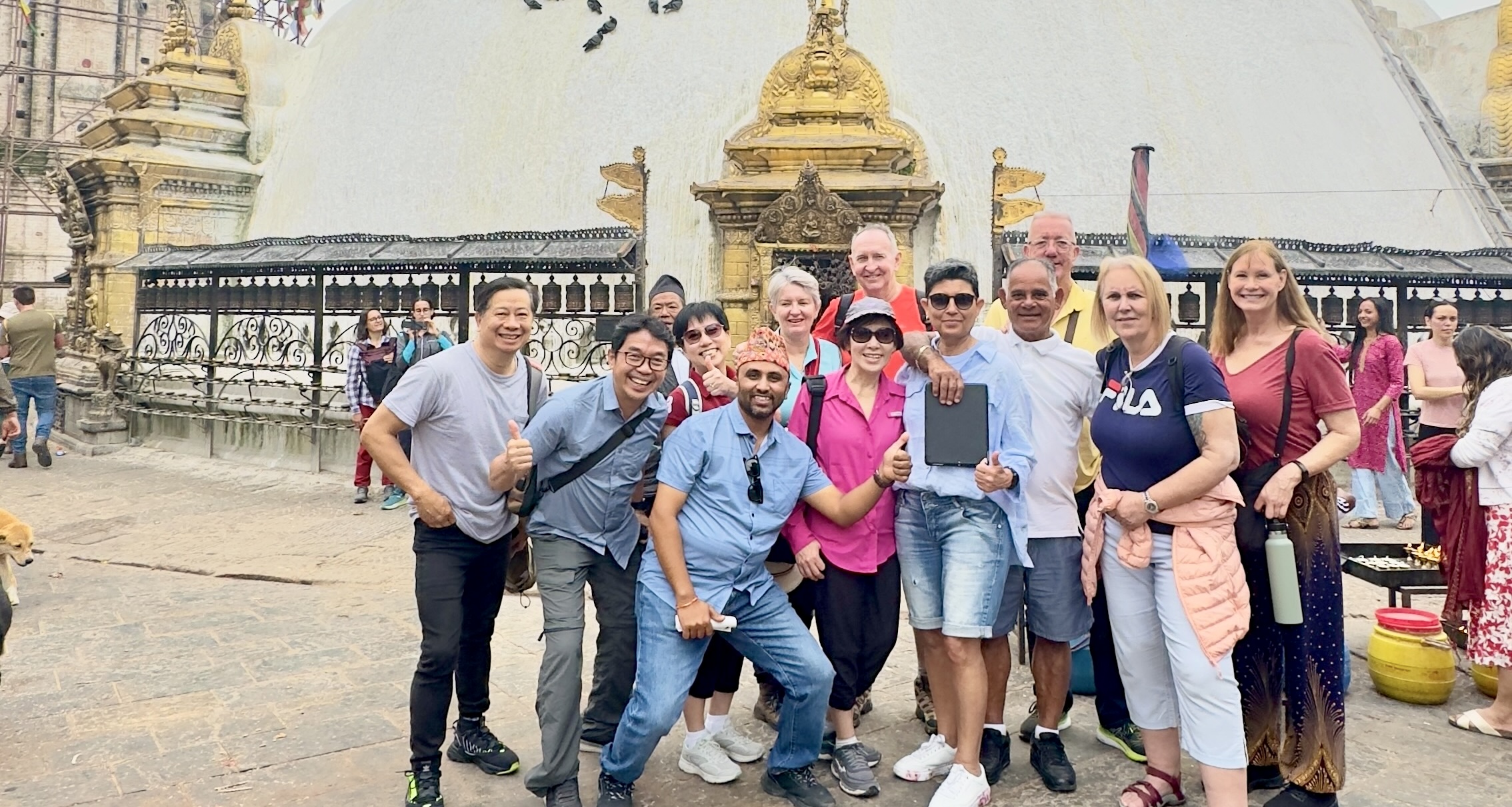
Beyond expertise, we add thoughtful touches that transform a simple tour into a meaningful experience. From arranging private blessing ceremonies with local priests to connecting you with master craftspeople who still practice ancient art forms, we create moments that go beyond sightseeing.
Our vehicles are comfortable and air-conditioned, with cold water always available—small comforts that make a big difference when exploring in Kathmandu's weather. We pace our tours thoughtfully, knowing when you might need a refreshment break at a scenic spot or when it's time to simply sit and absorb the atmosphere of these remarkable places.
Pashupatinath Temple: Sacred Hindu Pilgrimage Site
Ancient Architecture and Religious Significance
Perched on the banks of the sacred Bagmati River, Pashupatinath Temple stands as Nepal's most revered Hindu shrine. We've been bringing visitors here for years, and the temple's 5th-century origins never fail to impress. The main pagoda-style temple features a distinctive cubic construction, four silver-plated doors, and an extraordinary gold pinnacle.
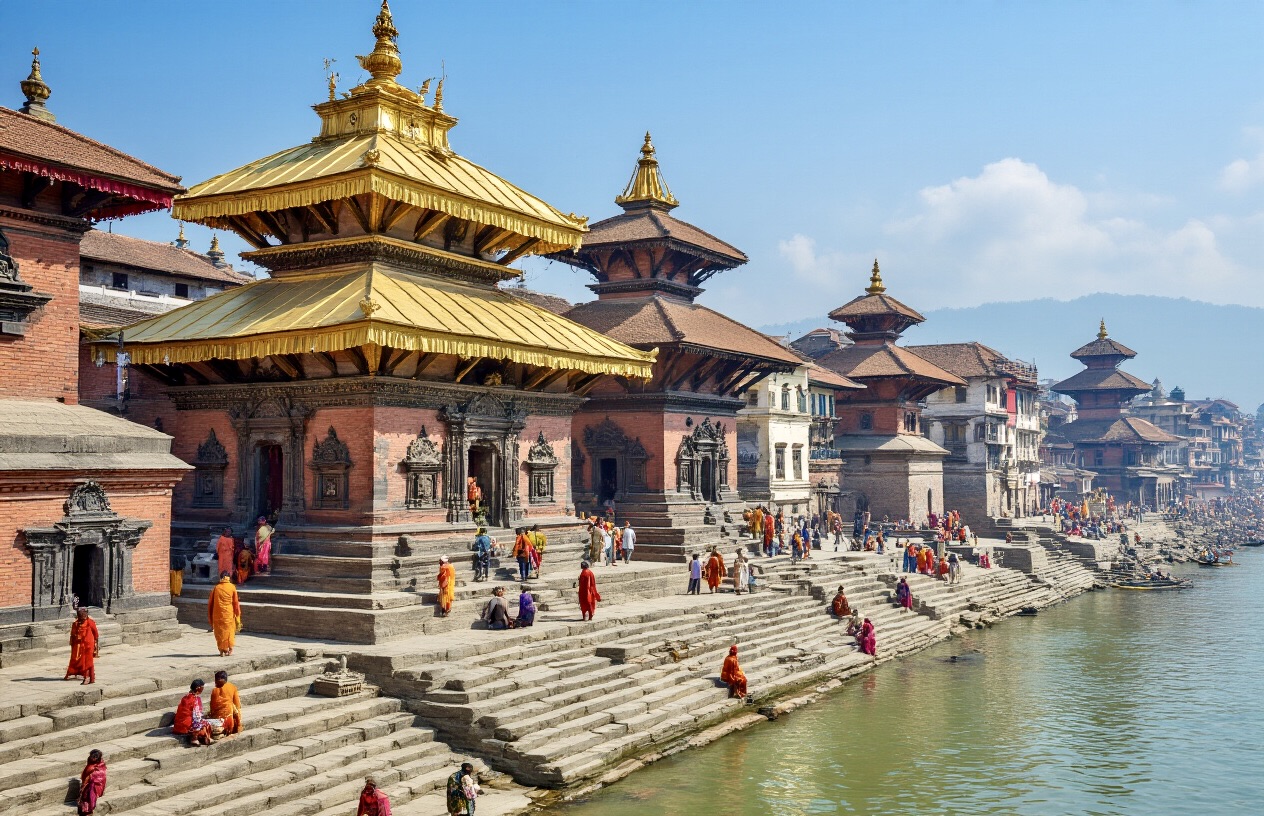
What really sets Pashupatinath apart is its spiritual importance. As one of Lord Shiva's most sacred abodes, it draws devotees from across the Indian subcontinent. The temple houses a remarkable lingam (phallic symbol) representing Lord Shiva, and only Hindu visitors can enter the main sanctuary. Don't worry, though – we'll make sure you experience the incredible atmosphere from the best vantage points regardless.
Experiencing Riverside Rituals and Ceremonies
The banks of the Bagmati River offer a profound glimpse into Hindu traditions. We often time our visits to witness the cremation ceremonies conducted on the ghats (steps leading to the river). While this might sound intense, it's actually a moving experience that provides unique insights into Hindu beliefs about life and death.
Morning visits reward us with views of devotees performing ritual baths and prayers. The air fills with the sounds of bells, chants, and occasional music. During auspicious festivals like Maha Shivaratri, we'll see the temple transformed with thousands of pilgrims, sadhus (holy men) with painted bodies, and elaborate ceremonies that have remained unchanged for centuries.
Photography Opportunities and Visitor Etiquette
The Pashupatinath complex offers incredible photo opportunities, from the stunning temple architecture to the colorful sadhus who often pose for photographs (though a small donation is appreciated). We always remind our guests about proper etiquette – photography of cremation ceremonies should be done respectfully from a distance.
When visiting, we'll help you dress appropriately (shoulders and knees covered) and navigate the complex with cultural sensitivity. The temple area has numerous smaller shrines, statues, and fascinating architectural details that make for beautiful photographs. The best lighting for photos comes in the early morning or late afternoon when the sun bathes the complex in a golden glow.
Expert Insights from Your Private Guide
Our guides don't just show you around – they help you understand the deeper meanings behind what you're seeing. They'll explain the significance of the various deities, the symbolism in the architecture, and translate inscriptions that tell fascinating stories about Nepal's past.
We pride ourselves on providing context that transforms a simple sightseeing visit into a cultural journey. Our guides share legends about Pashupatinath's miraculous origins and point out details you might otherwise miss. They can answer your questions about Hindu practices and beliefs, making the complex rituals and symbols accessible even if you're unfamiliar with Hinduism.
Boudhanath Stupa: Buddhist Spiritual Center
The Impressive Structure and Its Symbolism
Boudhanath Stupa isn't just big – it's massive. We're talking about one of the largest spherical stupas in Nepal, with a mandala base that stretches 100 meters across. When we first approach it, we're always struck by its towering presence and the all-seeing eyes of Buddha that gaze in four directions from the harmika.
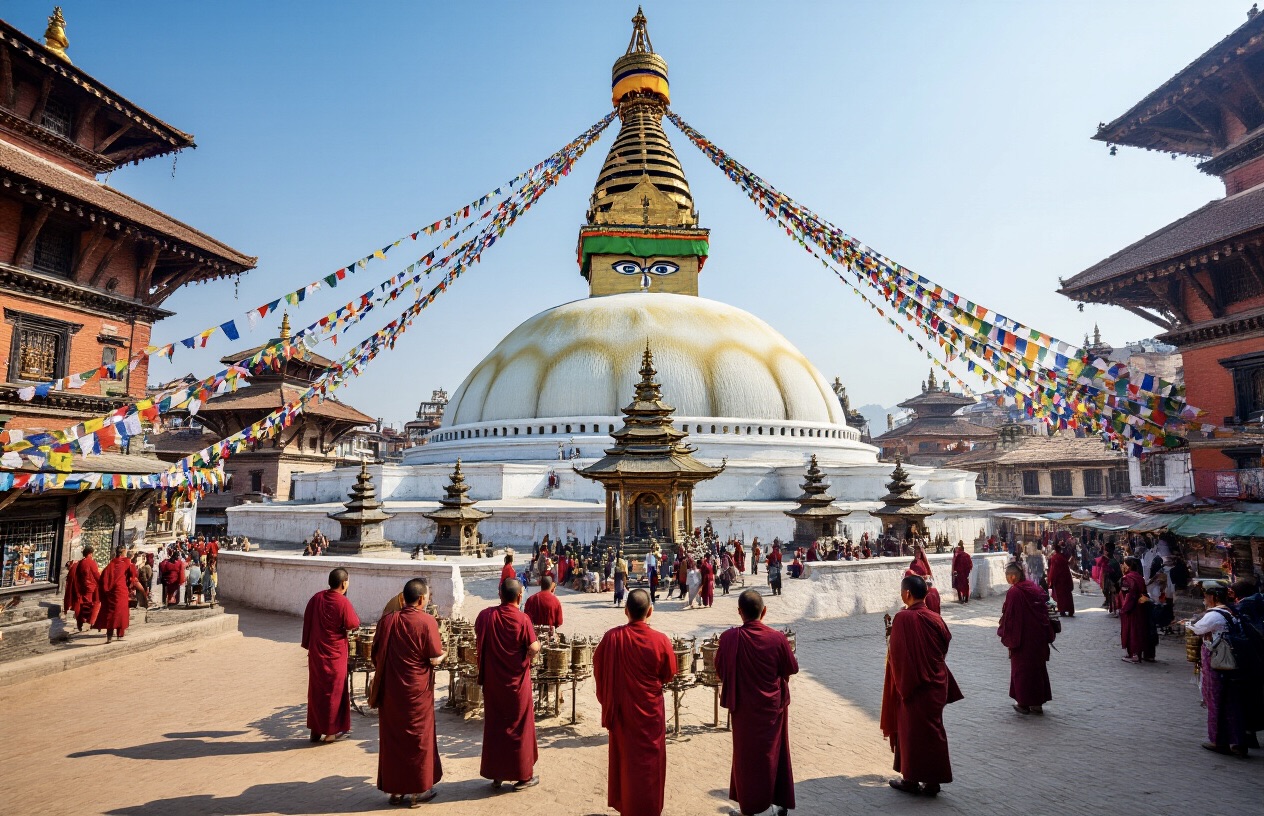
The stupa's design isn't random. Every element tells a story. The base represents earth, the dome represents water, the tower symbolizes fire, the umbrella is air, and the crowning jewel represents space. We love pointing out how the 13 steps of the spire represent the path to enlightenment.
Circumambulation Experience and Prayer Wheels
Walking clockwise around Boudhanath is an experience we never tire of. The energy is palpable as pilgrims and tourists alike join in this meditative practice. We always recommend our guests spin the prayer wheels that line the outer walls – each containing mantras that are symbolically released with every turn.
The gentle hum of "Om Mani Padme Hum" fills the air as we circle the stupa. There's something incredibly grounding about joining locals in this ancient ritual, especially at sunset when butter lamps illuminate the path.
Surrounding Monasteries and Tibetan Influence
The area around Boudhanath is like a mini-Tibet. We often duck into the various monasteries that surround the stupa – Shechen Monastery is our favorite with its stunning murals and occasionally visiting monks performing elaborate ceremonies.
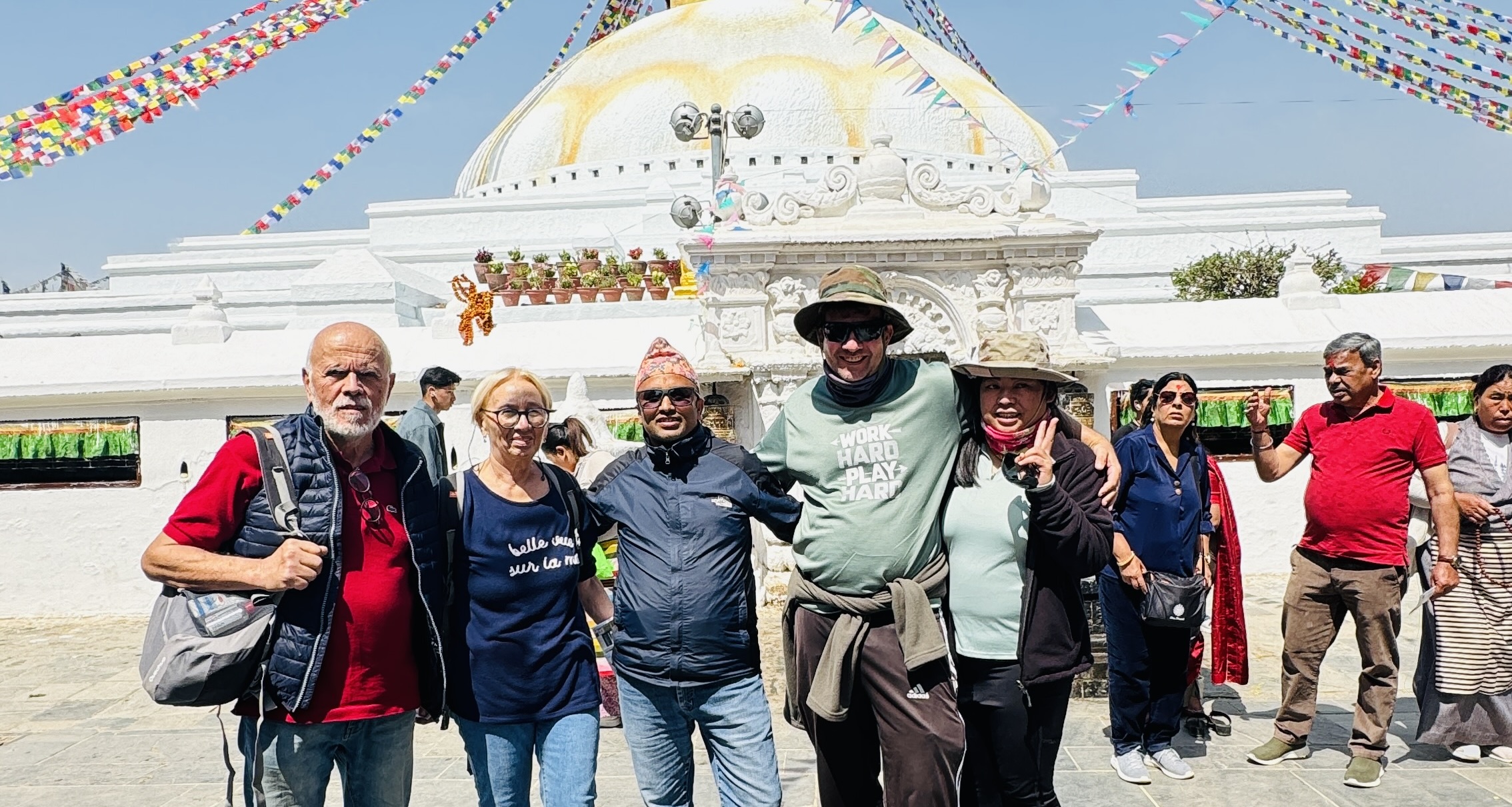
After the Tibetan diaspora in 1959, many refugees settled here, bringing their rich traditions. The influence shows in everything from the prayer flags fluttering overhead to the maroon robes of monks studying in the courtyards. We've found some of the most authentic Tibetan Buddhism practices right here in Kathmandu.
Best Times to Visit for Authentic Cultural Immersion
Morning is magical at Boudhanath. We try to arrive around 7 am when local devotees perform their first kora (circumambulation) of the day. The atmosphere is thick with incense and devotion.
For something special, we time our visits to coincide with Buddhist festivals like Losar (Tibetan New Year) or Buddha Jayanti. The stupa transforms with elaborate decorations, butter sculpture offerings, and monks performing sacred dances.
Sunset offers another perfect window when the golden hour light bathes the white dome and prayer flags snap in the evening breeze.
Local Cuisine Near Boudhanath
The food scene around Boudhanath gives us serious cravings. Tiny hole-in-the-wall spots serve the most authentic Tibetan dishes we've found outside of Lhasa.
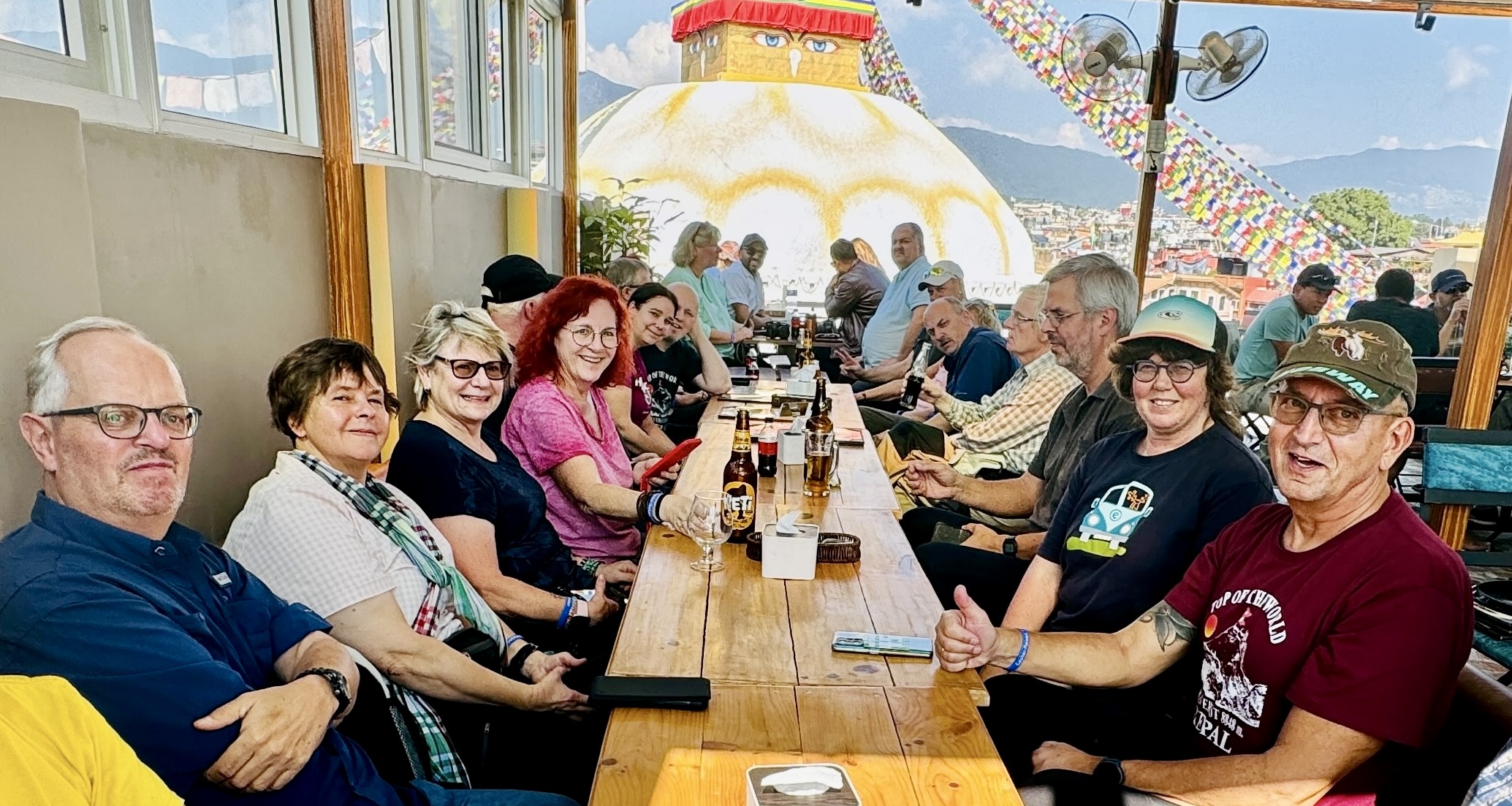
We never leave without sampling momos (dumplings) stuffed with spiced meat or vegetables. The steaming thukpa (noodle soup) is our go-to on chilly days. For something sweet, we head to one of the rooftop cafés facing the stupa for Tibetan butter tea and fresh-baked khapse (pastries).
Our favorite spot? The Garden Kitchen, where we can enjoy traditional dishes while gazing directly at the magnificent stupa from the terrace.
Swayambhunath: The Iconic Monkey Temple
Panoramic Views of Kathmandu Valley
Perched atop a hill west of Kathmandu, Swayambhunath offers some of the most breathtaking panoramic views you'll find anywhere in Nepal. We always recommend our guests visit early morning when the valley awakens under golden sunlight. From this vantage point, we can see the entire Kathmandu Valley spread out below us like a living map – the densely packed buildings, winding streets, and distant mountains creating a spectacular vista.
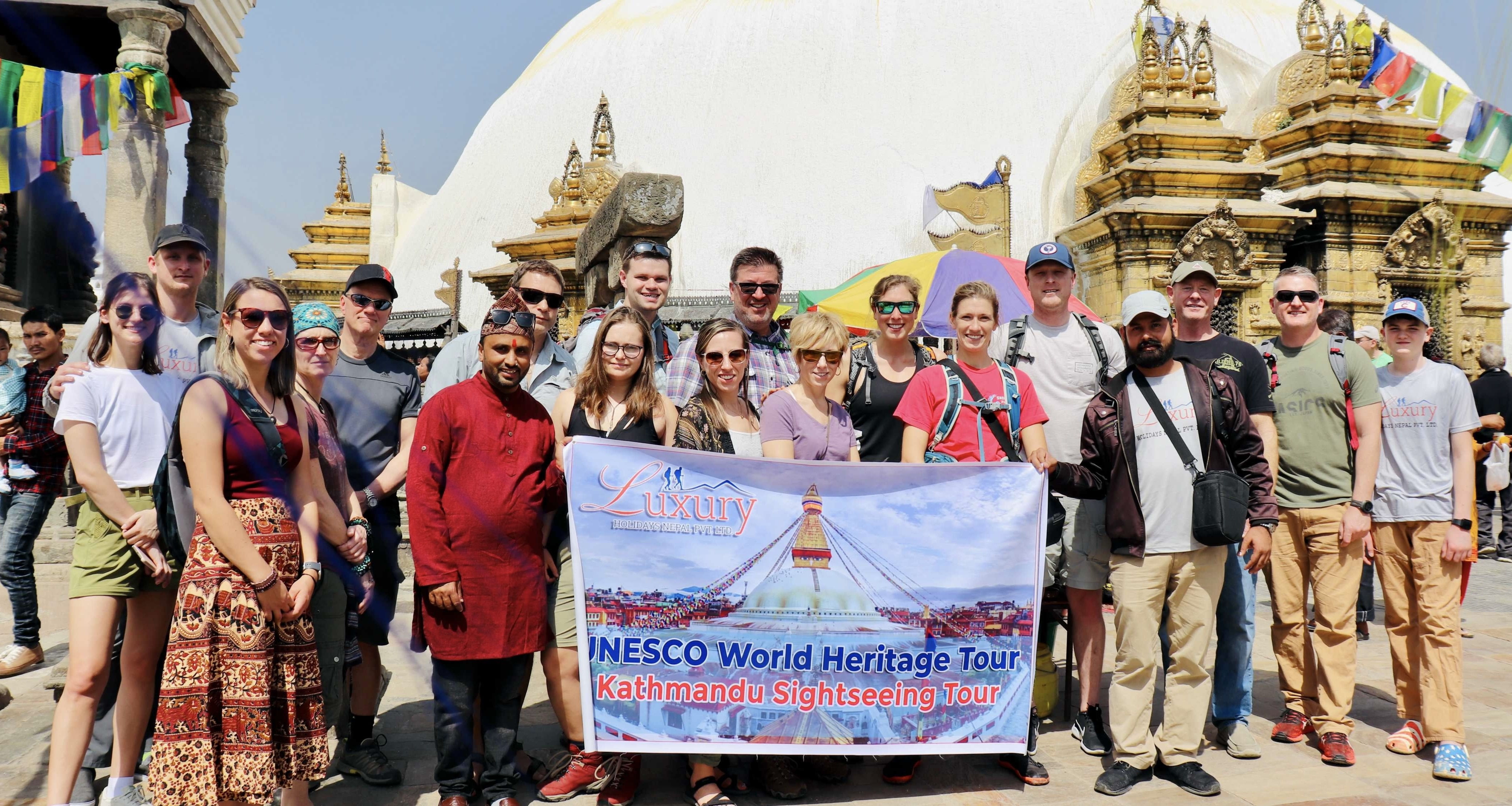
The view changes dramatically with the seasons. During clear winter days, we often spot the snow-capped Himalayan peaks forming a majestic backdrop. In spring and summer, the lush greenery of surrounding hills creates a beautiful contrast with the urban landscape.
Buddhist and Hindu Harmony in Architecture
What makes Swayambhunath truly special is how it beautifully blends Buddhist and Hindu elements. We've guided countless visitors through this architectural marvel, where the massive white stupa with Buddha's eyes gazing in four directions forms the centerpiece. Around it, you'll find both Buddhist prayer wheels and Hindu shrines existing in perfect harmony.
We love pointing out the intricate wood carvings on the surrounding temples that showcase centuries of craftsmanship. The colorful prayer flags fluttering in the breeze add vibrant energy to the ancient stones. This sacred site perfectly embodies Nepal's religious tolerance – something we're particularly proud of.
Interaction with Local Devotees and Monkeys
The spiritual energy at Swayambhunath is palpable. We often see locals performing morning rituals – lighting butter lamps, spinning prayer wheels, and making offerings. Many of our guests enjoy watching these authentic practices and sometimes even participating when appropriate.
And yes, there are the monkeys! These mischievous residents have earned the temple its nickname. We always warn our guests to keep snacks hidden and valuables secure. The monkeys are considered holy as they're believed to have sprung from the head lice of Manjushri, the bodhisattva of wisdom. Despite their occasional naughtiness, watching their antics adds a playful dimension to this profound spiritual site.
Kathmandu Durbar Square: Royal Heritage
Former Royal Palace Complex and Architecture
The heart of Kathmandu Durbar Square is its magnificent palace complex, once home to Nepal's royal family until the 19th century. We've explored these ornate buildings countless times and still discover new details with each visit. The complex showcases the exceptional Newari architecture with its multi-tiered roofs, intricate wood carvings, and gilded doorways that simply take your breath away.
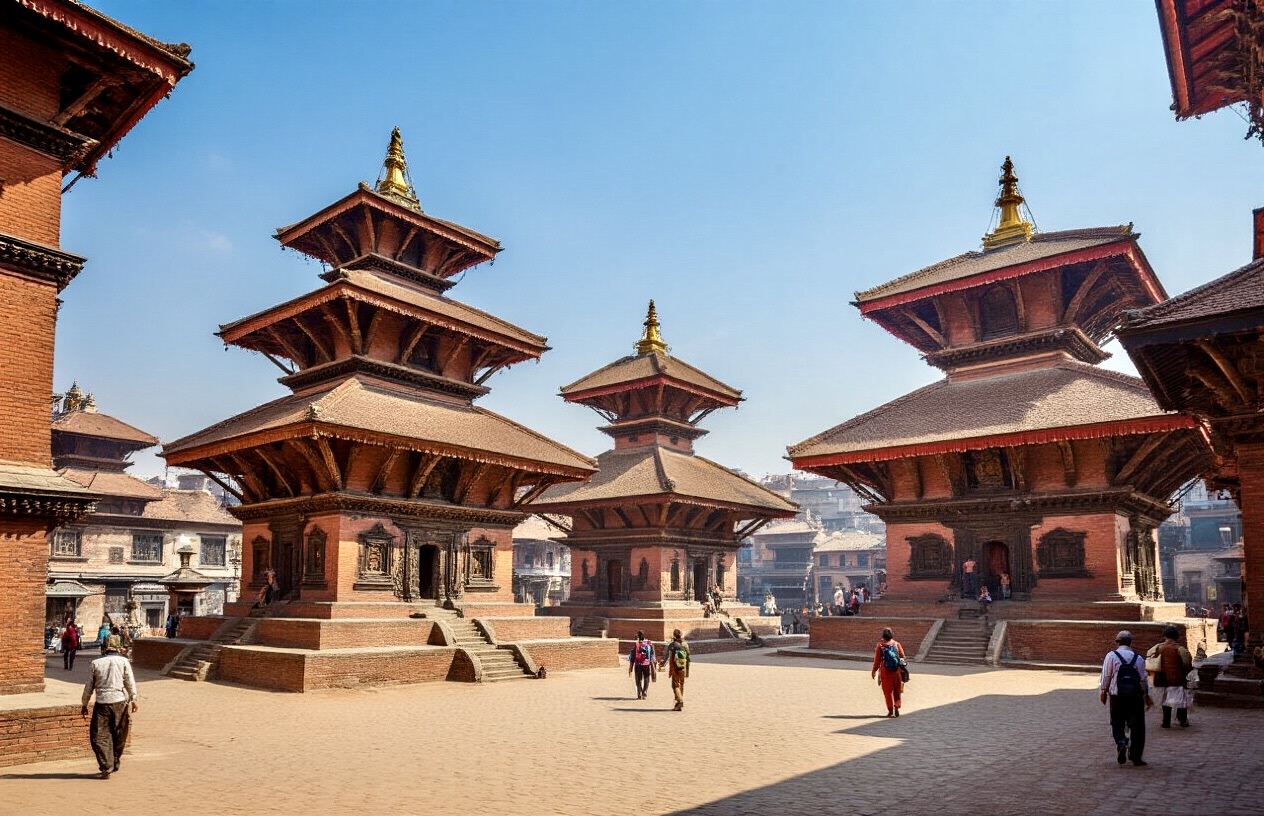
Walking through Hanuman Dhoka, the main entrance guarded by a monkey god statue, we're immediately transported back to the days when kings ruled from these courtyards. The architectural style here isn't just beautiful—it's a perfect blend of Hindu and Buddhist elements that tells the story of Nepal's unique cultural history.
Kumari Living Goddess Tradition
One of the most fascinating aspects of visiting Kathmandu Durbar Square is catching a glimpse of the Kumari—Nepal's living goddess. We always recommend our guests visit the Kumari Ghar, an exquisitely carved building where the young girl selected as the current Kumari resides.
The tradition continues to this day, with a young Newari girl chosen through an ancient selection process involving 32 perfect physical attributes. She serves as the living embodiment of divine female energy until she reaches puberty. If you're lucky, you might see her appear at her window—photography isn't allowed, but the memory of seeing a living goddess will stay with you forever.
Hidden Courtyards and Lesser-Known Structures
Beyond the main attractions, we love guiding visitors through the maze of hidden courtyards and lesser-known temples. These quiet spaces offer a break from the bustling main square and provide a more intimate connection with local life and traditions.
The Nasal Chowk (Dancing Courtyard), where royal coronations once took place, features stunning stone sculptures and religious artwork that many tourists overlook. We also make sure to show our guests Narayanhiti Durbar, Mohan Chowk, and Sundari Chowk—each with its own architectural significance and historical stories that don't make it into standard guidebooks.
Post-Earthquake Restoration Efforts
After the devastating 2015 earthquake, we witnessed significant damage to many structures in Kathmandu Durbar Square. Several temples collapsed, and others suffered structural damage that threatened this UNESCO World Heritage site.
The restoration process has been remarkable to watch. We've seen international teams working alongside local craftsmen, using traditional methods and materials where possible. Many temples have been fully restored, while others remain works in progress. Each visit shows progress—scaffolding coming down from one building while restoration begins on another. Despite the challenges, the square remains a living cultural center where religious ceremonies continue uninterrupted, proving the resilience of Nepal's cultural heritage.
Luxury Travel Details with Luxury Holidays Nepal
Comfortable Transportation Options
We've handpicked the finest transportation options to ensure your Kathmandu UNESCO tour is as comfortable as it is memorable. Our fleet includes air-conditioned private vehicles ranging from luxury sedans to spacious SUVs, depending on your group size. What makes our service special? Your dedicated vehicle stays with you throughout the day, ready whenever you wish to move between sites. No waiting for taxis or dealing with public transport hassles.

Customizing Your UNESCO Heritage Tour
No two travelers are alike, which is why we never offer one-size-fits-all experiences. Want to spend more time at Boudhanath Stupa for photography? Planning to witness a special ceremony at Pashupatinath? Or maybe you're keen to explore some hidden corners of Bhaktapur? We've got you covered. Our team works with you to craft a personalized itinerary that matches your interests, pace, and priorities.
Expert Local Guides and Their Knowledge
Our guides aren't just tour leaders – they're storytellers and cultural ambassadors with deep connections to these sacred places. Many have grown up in the shadow of these monuments and bring personal insights you won't find in guidebooks. They're university-educated in Nepalese history and culture, speak excellent English, and know exactly when to share fascinating details and when to step back and let you soak in the atmosphere.
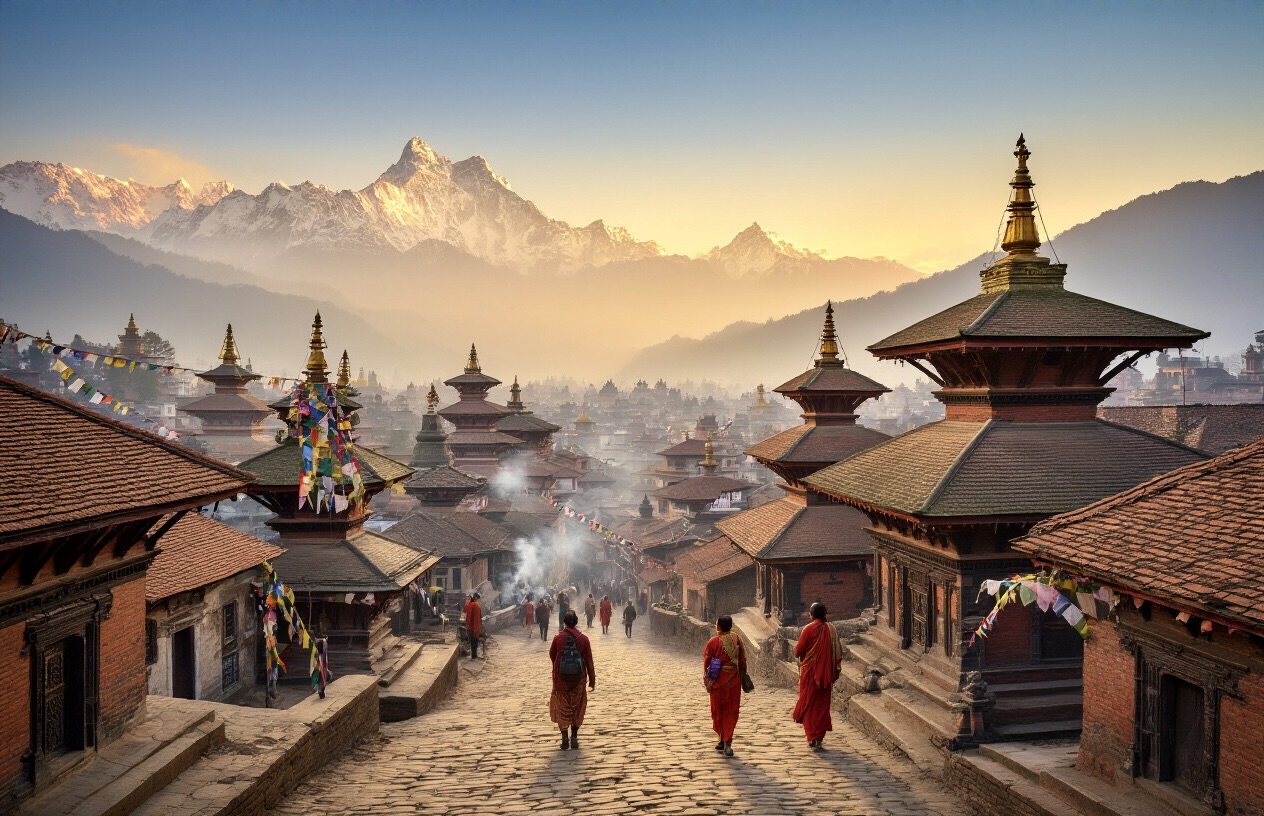
Exclusive Access and Special Arrangements
We've cultivated relationships with local authorities and communities over decades, allowing us to arrange experiences most travelers miss. This might include early morning visits before the crowds arrive, access to normally restricted areas, or meetings with local artisans continuing centuries-old traditions. These touches transform your UNESCO tour from a sightseeing trip into a genuine cultural immersion.
Recommended Duration and Best Seasons
While it's technically possible to rush through the UNESCO sites in a single day, we strongly recommend a two-day experience to truly appreciate these magnificent places. October to November and February to April offer the most pleasant weather with clear mountain views and comfortable temperatures.
During these months, the skies are typically crystal clear, perfect for photography, and the temperatures range from 15-25°C (59-77°F). If you visit during festival seasons like Dashain or Tihar, you'll witness these ancient places come alive with additional cultural celebrations.
Discovering Kathmandu's UNESCO treasures through a private tour offers an unparalleled journey into Nepal's rich cultural tapestry. From the sacred Hindu grounds of Pashupatinath Temple to the serene Buddhist sanctuary of Boudhanath Stupa, the ancient wisdom of Swayambhunath Monkey Temple, and the royal splendor of Kathmandu Durbar Square - these four heritage sites showcase the valley's remarkable spiritual and architectural achievements.
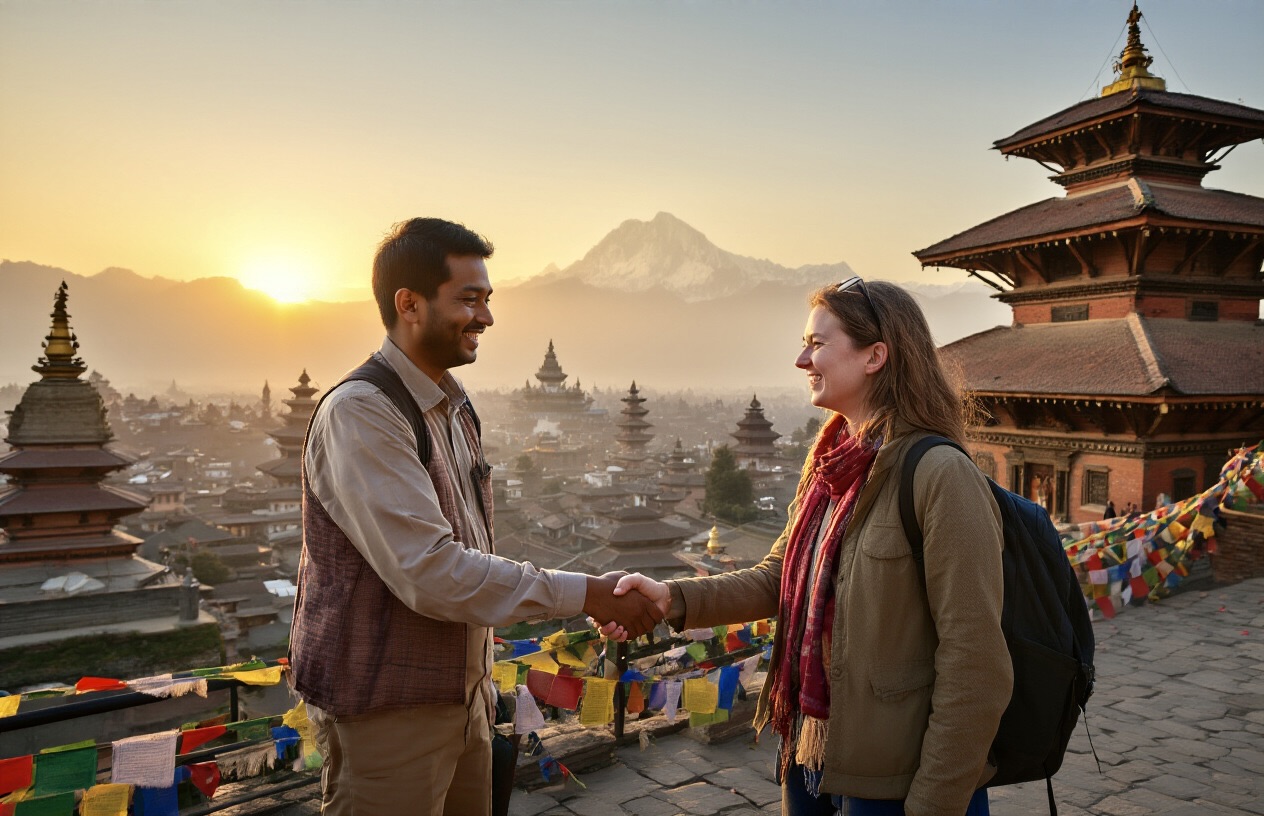
Experience these magnificent landmarks with the expertise and comfort that Luxury Holidays Nepal provides. Our private tours ensure you can explore at your own pace, with knowledgeable guides who bring these ancient wonders to life. Book your heritage adventure today and create memories that will last a lifetime amid the Himalayan kingdom's most precious cultural jewels.
If you need any further information, please contact us by email: at [email protected], Phone: +977 985 100 5129 (WhatsApp)

